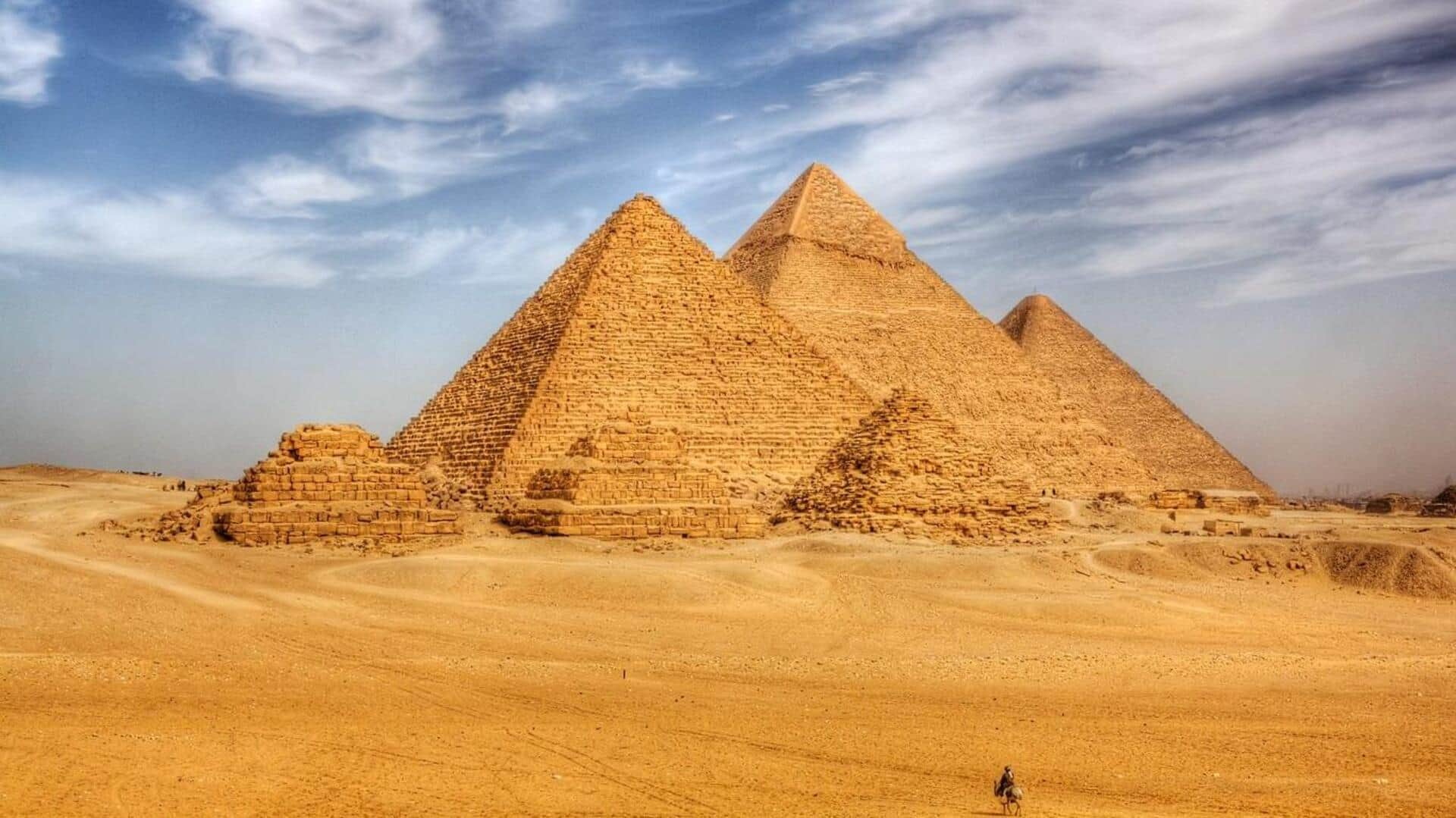
Was Great Pyramid of Giza built from the inside?
What's the story
A new study has proposed an unconventional theory about the construction of the Great Pyramid of Giza. According to Simon Andreas Scheuring, a scientist at Weill Cornell Medicine in New York, the ancient wonder was not just a structure but also a machine that built itself from within. The research, published in npj Heritage Science, suggests internal pulley-like systems and sliding counterweights were used to create these massive structures.
Innovative technique
How was the pyramid built?
Scheuring's research proposes that the Great Pyramid was built from the inside out, without heavy machinery. He suggests that internal stone-lined ramps and pulley-like setups were used to lift and place heavy limestone and granite blocks. This method explains how architects could place one block every one to three minutes, ensuring a fast-paced construction process.
Architectural evidence
Architectural features that support the theory
Scheuring points to several architectural features inside the pyramid that support his theory. He believes the Grand Gallery and Ascending Passage were used as sloped ramps where counterweights could have been slid downward to generate force. The Antechamber, which experts have long believed to be a security feature, actually housed a pulley-like mechanism that helped lift blocks weighing up to 60 tons toward the top.
Phased approach
Phased construction and the elimination of massive ramps
Scheuring explains that the Great Pyramid wasn't built like a regular building, but in phases. He says there was a central starting point where the internal passages split, and over several phases, the expansion happened upward and outward. This method eliminated the need for massive ramps, which have never been found despite their presumed size.
Feasibility
The pyramid as a tool of its own creation
Scheuring's paper describes how the ropes were threaded over wood beams inside the Antechamber to lift materials through shafts, making the pyramid itself a tool of its own creation. His model has divided the work into phases and across the four faces of the pyramid. This approach seems plausible considering that the Great Pyramid has more than two million blocks and stands 480 feet high.